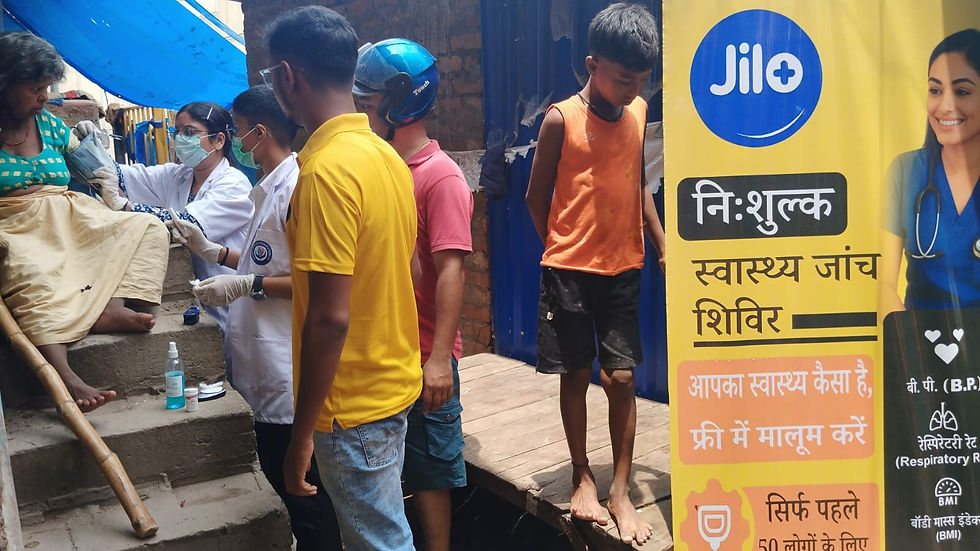What are the learnings for founders building for middle quintiles from Groww?
- Suman Jha
- Oct 22, 2023
- 3 min read
Last month, I wrote a short essay on a critical lesson that founders must learn from Zerodha’s success. The truth is, our startup - Jile Health - is not aiming to cater to the same customer base that Zerodha has already built or is currently building. Consequently, our core building principles and strategies will naturally differ from those of Zerodha. We've had this realization since day zero, and it's one of the reasons why many people we've spoken to may need time to fully comprehend our approach.
Without overstating this, the seed of this essay was not after the news of Groww surpassing Zerodha’s in terms of active investors - this is just a number and Groww is no way near to the Zerodha. I first jotted down a note on 4th July about Groww on my digital notepad after reading an Arc article. At the end of the note, I simply wrote, "Absolutely brilliant." And today, as I was preparing for an upcoming Rainmatter meeting, I found myself creating a comparative analysis between the strategies of Zerodha and Groww. This exercise made me realize, almost subconsciously, that we are also incorporating some of Groww's strategies into our own approach. Hence, this essay.
While there may be numerous valuable lessons for founders not targeting the top two quintiles, I'd like to share three key takeaways.
Clarity on Target Group: Groww recognized that it couldn't directly compete with Zerodha's high Revenue Per User (RPU) customer base. Consequently, Groww positioned its product and defined its target audience differently. While Zerodha was hyper-focused on India's urban top quintile (Quintile 5), Groww oriented itself towards urban Quintiles 4 and 3, as well as rural Quintiles 5 and 4. This strategic clarity is evident in their execution plans. Let's create a comparison table to better understand these execution strategies.

Zerodha has almost 3 times more Twitter followers compared to Groww however, Groww has 4 times more YouTube and Instagram subscribers and followers. (There is a drastic difference in the content strategy between the two companies).
Building for the Long-term: With a deeper understanding of their target audience, Groww acknowledged the potential challenges in achieving breakeven in the short term. This led them to adopt a long-term perspective in their strategies, as clearly reflected in the execution strategies of Groww and Zerodha. Zerodha remained heavily focused on stocks for the initial eight years of their journey, eventually branching out by partnering with other startups to offer various financial products. Groww, on the other hand, continuously added new products to keep users engaged.

Monetization Strategy: Thanks to their precise understanding of their target audience and long-term vision, Groww's approach to monetization differed significantly from Zerodha's. The clarity regarding the target audience allowed Groww to acquire users at a lower cost, and their multi-product approach led to higher user engagement hence higher usage frequency (The purpose of UPI is again to increase usage frequency). Hosting offline community events fostered deeper trust. By acquiring users at a low Customer Acquisition Cost (CAC) and offering a variety of products, Groww could price their offerings more competitively. We can understand this strategy better through an example.
A Zerodha user might already possess a credit card, have a credit score, and may even be investing in mutual funds. In contrast, a Groww user likely has no credit score, no credit card, and has never ventured into mutual fund investments. Consequently, Groww offers all these services at the cost equivalent to a single CAC. This means their products are available at a lower price compared to competitors.
In summary, none of us can underestimate India's potential, as the quintiles in India have a unique character compared to the rest of the world. Hence, the strategies for building companies in the same market may vary significantly. If we consider Groww a success story, these insights can be invaluable for founders targeting the middle quintiles. Lastly, it's essential to clarify that this is not a comparison essay between Zerodha and Groww. I hold Zerodha in high regard, and it is likely to remain the market leader.
Thanks for reading if you find my essay useful please share this with your network. I shall see you all next week :)

